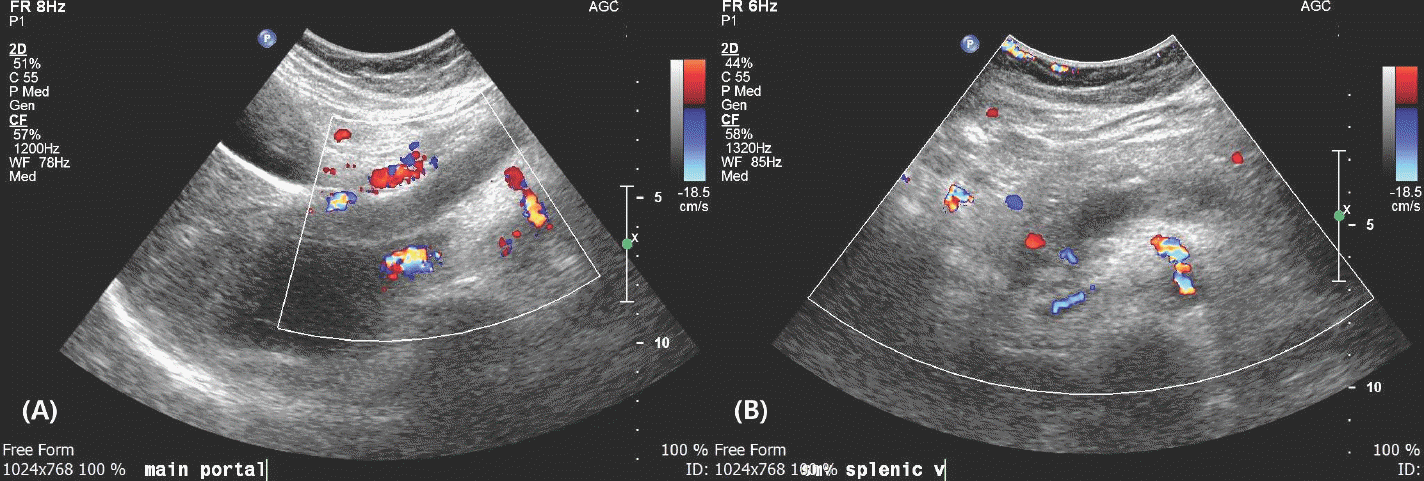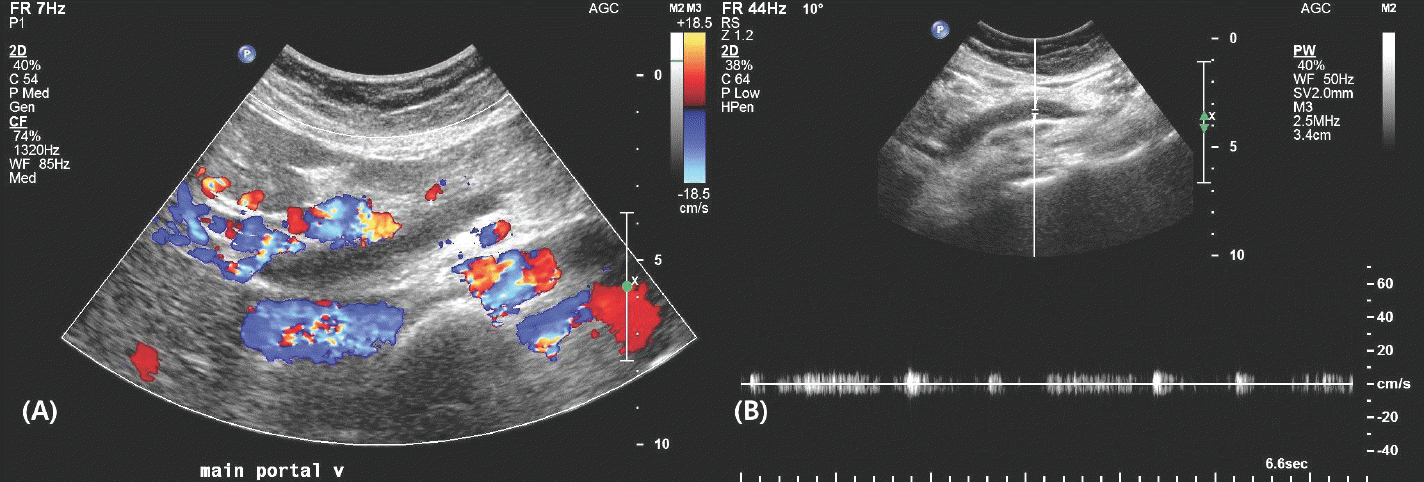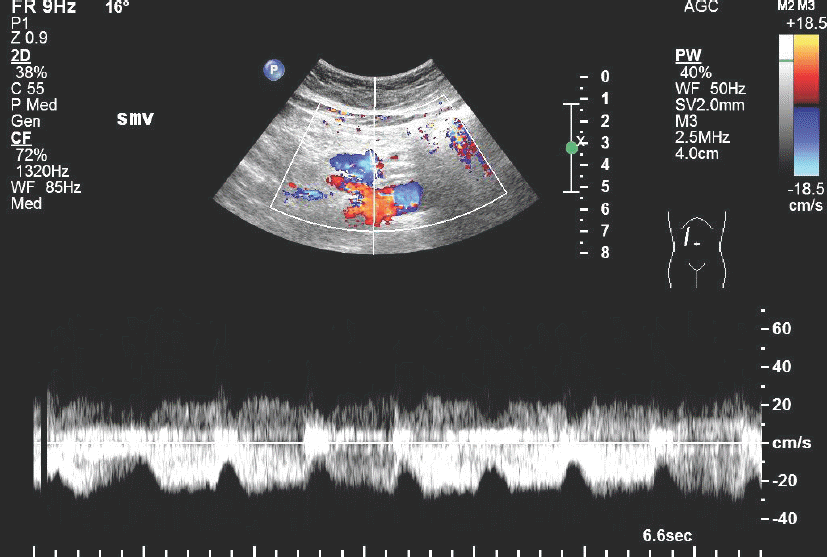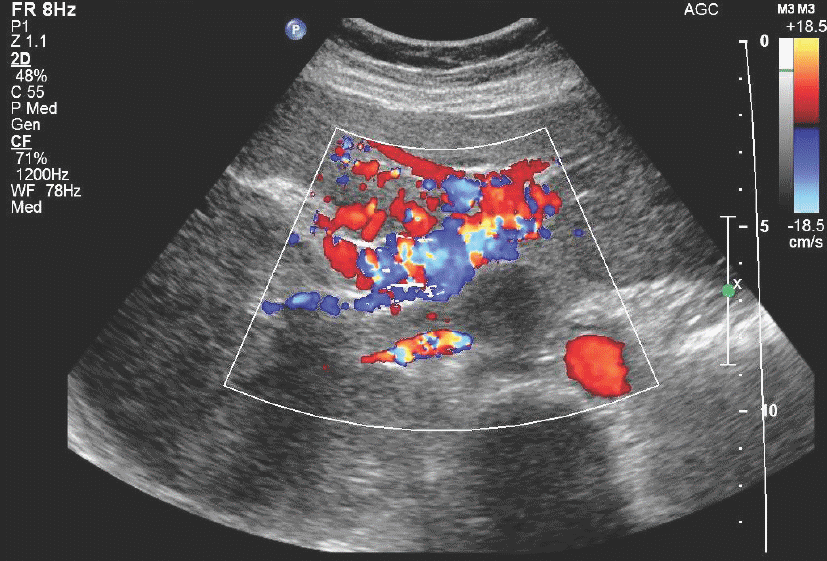Abstract
Portal vein thrombosis complicating pregnancy is a rare occurrence. The etiology of portal vein thrombosis is highly diverse. A 31-year-old multigravida was diagnosed with acute portal vein thrombosis at 12 weeks of gestation by ultrasound examination. She had epigastric and left upper quadrant pain, but there was no significant medical or surgical illness in the past. Laboratory studies showed no evidence of a thrombophilia. She was managed with anticoagulants and labor was induced at 38 weeks because of premature rupture of membranes. She delivered a healthy neonate without any complications. It seems that the cause of this thrombotic event was the hypercoagulable state of pregnancy.
References
2. Okuda K, Ohnishi K, Kimura K, Matsutani S, Sumida M, Goto N, et al. Incidence of portal vein thrombosis in liver cirrhosis. An angiographic study in 708 patients. Gastroenterology. 1985; 89:279–86.
3. Amitrano L, Guardascione MA, Brancaccio V, Margaglione M, Manguso F, Iannaccone L, et al. Risk factors and clinical presentation of portal vein thrombosis in patients with liver cirrhosis. J Hepatol. 2004; 40:736–41.

4. Gertsch P, Matthews J, Lerut J, Luder P, Blumgart LH. Acute thrombosis of the splanchnic veins. Arch Surg. 1993; 128:341–5.

5. Chandra R, Kapoor D, Tharakan A, Chaudhary A, Sarin SK. Portal biliopathy. J Gastroenterol Hepatol. 2001; 16:1086–92.

6. Hackmon-Ram R, Holcberg G, Bashiri A, Sapir O, Tov GY, Yermiahu T, et al. Thalassemia intermedia and cavernous transformation of portal vein thrombosis in pregnancy. Eur J Obstet Gynecol Reprod Biol. 2003; 107:101–4.

7. Bayraktar Y, Tuncer ZS, Kabukçu A, Uzunalimoğlu B, Ayhan A. Pregnancy complicated by congenital hepatic fibrosis with cavernous transformation of the portal vein: a case report. Am J Obstet Gynecol. 1997; 177:459–61.

8. Wax JR, Pinette MG, Cartin A, Winn SS, Blackstone J. Cavernous transformation of the portal vein complicating pregnancy. Obstet Gynecol. 2006; 108:782–4.

9. Tuncer I, Arslan H, Harman M. Two giant cavernous hemangiomas caused cavernous transformation of the portal vein in a pregnant woman. Turk J Gastroenterol. 2002; 13:229–31.
10. Ducarme G, Plessier A, Thuillier C, Ceccaldi PF, Valla D, Luton D. Pregnancy and delivery in patients with portal vein cavernoma. Gynecol Obstet Invest. 2009; 68:196–8.

11. Goodrich MA, James EM, Baldus WP, Lomboy CT, Harms RW. Portal vein thrombosis associated with pregnancy. A case report. J Reprod Med. 1993; 38:969–72.
13. Kearon C, Kahn SR, Agnelli G, Goldhaber S, Raskob GE, Comerota AJ. Antithrombotic therapy for venous thromboembolic disease: American College of Chest Physicians Evidence-Based Clinical Practice Guidelines (8th Edition). Chest. 2008; 133(Suppl 6):454S–545S.
14. Shergill AK, Ben-Menachem T, Chandrasekhara V, Chathadi K, Decker GA, Evans JA, et al. Guidelines for endoscopy in pregnant and lactating women. ASGE Standard of Practice Committee. Gastrointest Endosc. 2012; 76:18–24.




 PDF
PDF ePub
ePub Citation
Citation Print
Print






 XML Download
XML Download